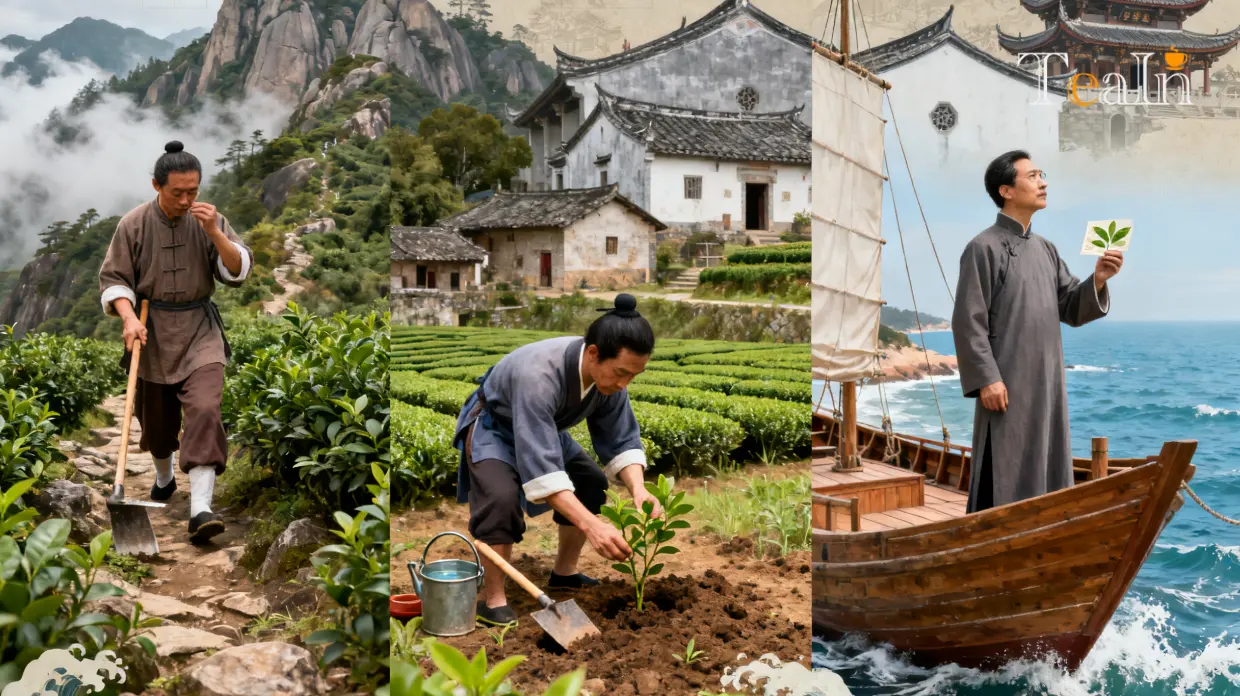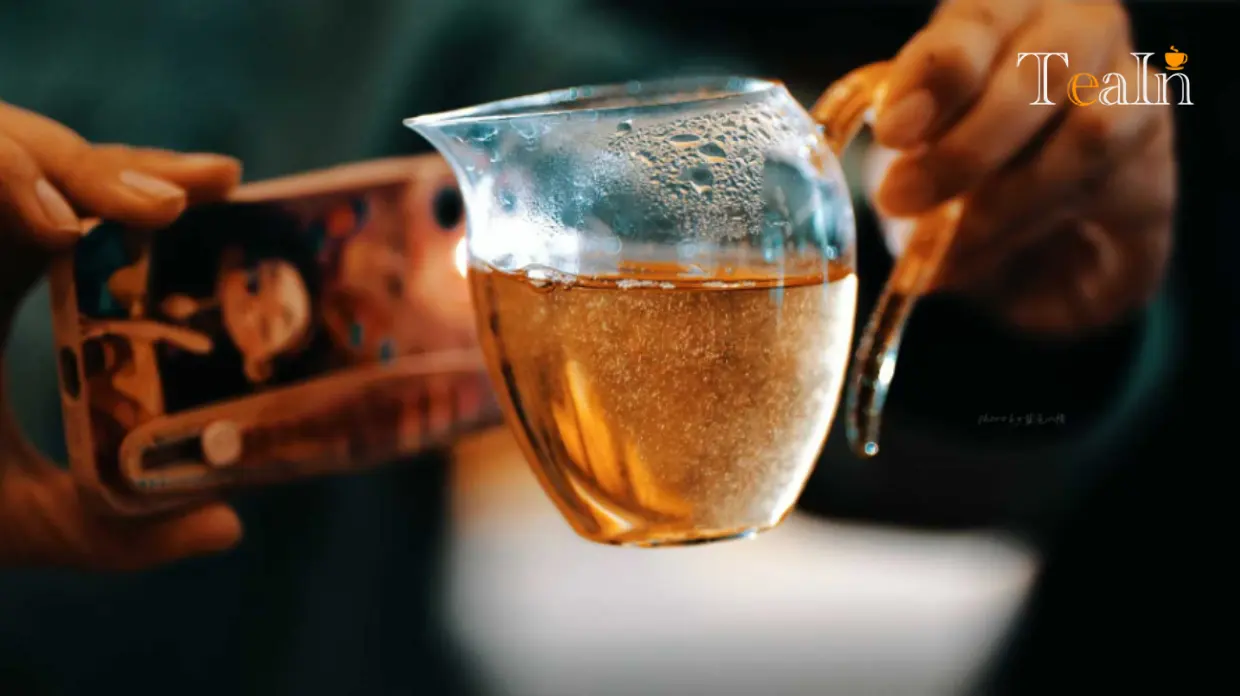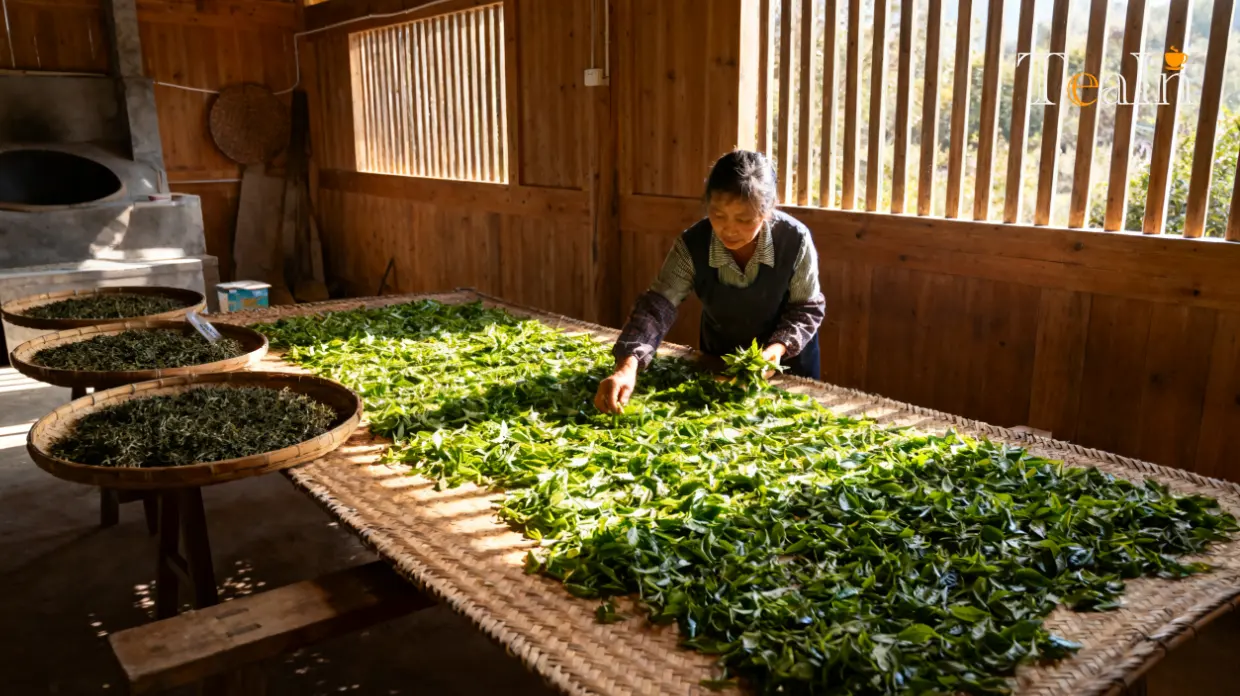Fuding White Tea: A Century-Old Legend of "Golden Leaves" Blending Time and Craftsmanship

"The world’s white tea comes from China, and China’s finest white tea comes from Fuding." This centuries-old saying speaks volumes about the unique status of Fuding White Tea in the global tea industry. Hailing from Fuding City, Ningde, Fujian Province, this tea is not only a national geographical indication product of China but also made it to the first batch of China-EU Geographical Indications Protection List in 2020, becoming a cross-border "Oriental business card." Behind this glory lies the nurturing grace of Mount Taimu, and more importantly, the dedicated craftsmanship of generations of tea masters, represented by Chen Huan, Lin Shengsong, and Mei Bozhen.
1. Origin Code: The "Golden Growing Zone" at the Foot of Mount Taimu
The high quality of Fuding White Tea stems from its "nature-blessed" growing environment — the golden latitude of 26°N, the scenic landscapes of Mount Taimu, and the climate where mountains meet the sea, all combining to shape its unique flavor.
Fuding is located in northeastern Fujian, spanning the latitude range of 26°52′N to 27°26′N — exactly the "golden growing zone" for high-quality tea worldwide. Here, mountains and the sea connect, with the spurs of Mount Taimu stretching endlessly. Tea gardens are mostly distributed on slopes 300 to 800 meters above sea level, which receive ample sunlight while avoiding direct intense rays, allowing tea trees to accumulate nutrients slowly.
Climatically, Fuding has a subtropical marine monsoon climate, with an average annual temperature of 18-20°C, a frost-free period of up to 280 days, and annual rainfall of 1600-2000mm. Moist air currents brought by sea breezes interweave with the mist-shrouded mountain environment, keeping the tea gardens in a state of "moist but not damp" year-round. This climate ensures plump tea buds with dense fine hairs (these hairs contain amino acids, the key to the fresh and smooth taste of white tea) while reducing pests and diseases, minimizing the need for artificial intervention.
In terms of soil, the tea gardens are mainly covered with red soil and yellow soil. The soil layer is deep (up to over 1 meter), rich in organic matter, and excellent in air permeability and water retention. Tea tree roots can penetrate deep into the soil to absorb minerals, endowing the tea with a faint "high-mountain charm." Compared to Fuding Dabai Tea (a major variety of Fuding White Tea) transplanted to other regions, the tea leaves from the original producing area have 10%-15% higher amino acid content, a more balanced ratio of tea polyphenols, and a fresher, more mellow taste.

2. Century-Old Origin: Three Generations of Tea Masters Rewrote China's White Tea History
The legend of Fuding White Tea began with the "coincidences" and "persistence" of three people — Chen Huan, Lin Shengsong, and Mei Bozhen — who laid the century-old foundation for Fuding White Tea.
During the Xianfeng period of the Qing Dynasty (1850-1861), Chen Huan, a tea farmer from Bailiu Village in Fuding, heard that "white tea can moisten the lungs" when his mother suffered from a persistent cough. He then went up Mount Taimu to find white tea. Near Hongxue Cave on Mount Taimu, he discovered a unique tea tree with plump buds and snow-white fine hairs. The brewed tea had a sweet taste, and his mother’s cough gradually subsided after drinking it. Chen Huan transplanted the tea tree home and propagated it using the division method. Years later, he promoted it to the entire village — this was the later "Fuding Dabai Tea." In 1984, this variety was designated as the national excellent tea variety "Huacha 1," becoming one of the core raw materials for Fuding White Tea today.
Shortly after Chen Huan, Lin Shengsong (born in 1851), a herbalist from Wengxi Village in Diantou Town, encountered a tea tree with "silver-like plump buds and snow-dense fine hairs" while collecting herbs in Wupu Ridge at the foot of Mount Taimu. He transplanted the tree to his village, picked its buds and leaves, and consulted tea masters. He found that the white tea made from this tree had far better aroma and taste than ordinary varieties, so he named it "Da Hao Cha" (literally "large-sized tea"). Without modern propagation technology, he spent years cultivating dozens of tea seedlings only through layering and division. During the late Qing Dynasty and early Republic of China, the Silver Needle White Tea made from "Da Hao Cha" was purchased at high prices by tea merchants and sold overseas. In 1984, this variety was certified as "Fuding Dahao Tea" (national excellent tea variety "Huacha 2"). With its larger buds and stronger fine hair aroma, it became the "dominant variety" of Fuding White Tea.
If Chen Huan and Lin Shengsong were the "sources," Mei Bozhen (1875-1941) was the "pioneer" who brought Fuding White Tea to the world. Starting at the age of 22, Mei Bozhen devoted himself to studying white tea production. After turning 30, he gave up farming and went into business, taking white tea from Bailiu Village to Tianjin, Hong Kong, and even crossing the sea to Southeast Asia and Singapore, making white tea known overseas. He also improved white tea processing techniques and pioneered Fuding jasmine tea. In his later years, he wrote A Letter from Xiaoxi (over 7,000 characters), which recorded the history of Fuding’s tea industry in detail and became a precious document for later research. Zhuang Wanfang, a leading tea expert, once commented: "Mei Bozhen made great contributions to Fuding’s tea industry."

3. Four Major Varieties: Diverse Flavors Bred by Minimalist Craftsmanship
The production of Fuding White Tea is known as the "art of subtraction" — no stir-frying or rolling, only two core processes: natural withering and slow drying over gentle fire. This retains the active enzymes and tea polyphenols in the tea leaves to the greatest extent. During withering, fresh tea leaves are spread thinly on bamboo mats, exposed to sunlight and breeze; during drying, they are slowly roasted over a gentle fire at 30-40°C until the moisture content drops to 5%-6%, ensuring a pure and long-lasting tea aroma.
This craftsmanship has nurtured four classic varieties:
- Silver Needle White Tea: Made from plump single buds, covered with dense silver fine hairs like needles, with a fresh and sweet aroma.
- White Peony White Tea: Picked as one bud with one or two leaves, the buds and leaves are connected like blooming flowers, combining floral and sweet notes.
- Gongmei Tea: Made from young shoots of "Xiaocai Tea" (a local ancient tea variety), its leaves curl like eyebrows, offering a mellow taste.
- Shoumei Tea: Contains one bud with three or four leaves, with natural tea stems. After aging, it easily develops jujube and herbal aromas.
The quality foundation of all these varieties lies in two national excellent tea varieties: Fuding Dabai Tea and Fuding Dahao Tea.
Silver Needle White Tea is like a "noble in tea" — its dry leaves are straight and silvery bright. When brewed, it yields a pale apricot-yellow liquor with a strong fine hair aroma, tasting fresh and sweet like "spring morning dew" with a long aftertaste. It is suitable for those pursuing high quality or as a gift. White Peony White Tea lives up to its name: plump buds and spreading leaves resemble blooming peonies. Its brewed liquor is bright apricot-yellow, blending floral and fine hair aromas, with a sweet and mellow taste that is easy for beginners to accept, making it cost-effective for daily drinking. Gongmei is a niche choice, made from the ancient "Xiaocai Tea" variety. Its small leaves curl like eyebrows, and the brewed liquor is pale yellow and bright with a strong mountain aroma. After aging, it highlights jujube notes, suitable for tea lovers who prefer unique flavors. Shoumei is the "affordable option," picked as one bud with three or four leaves (with stems). Fresh Shoumei has a pale yellow liquor with floral notes; aged Shoumei (over 3 years) yields a deep apricot-yellow liquor with distinct jujube and herbal aromas, and is warm when simmered, ideal for daily simmering or long-term collection.

4. Authentic Benefits: New Tea vs. Aged Tea, Each with Its Focus
The benefits of Fuding White Tea come from its "no stir-frying, no rolling" craftsmanship, which retains active ingredients such as tea polyphenols, amino acids, and tea polysaccharides to the greatest extent. However, new tea and aged tea have different focuses in benefits, so choose according to your needs.
New Tea (within 1 year): Its nature is slightly cool, with high content of tea polyphenols and amino acids. Drinking it in summer can relieve heat and quench thirst, reducing summer heat. With caffeine content 30% lower than green tea, it refreshes without causing insomnia. When paired with greasy food, it can neutralize oil and refresh the mouth. The catechins in tea polyphenols also help with daily oxidation resistance.
Aged Tea (over 3 years): During aging, tea polyphenols are gradually converted into "theaflavins," changing the tea’s nature from cool to warm, which is less irritating to the gastric mucosa. Simmering it in autumn and winter can warm the stomach. The content of tea polysaccharides increases, giving it a sweet and smooth taste that relieves fatigue. Drinking a small amount before bed (not over-simmered) does not affect sleep. In traditional cognition, aged white tea also has the effects of "moistening the lungs" and "dispelling dampness," suitable for people with cold constitutions or those prone to colds.
However, a rational view is needed: Fuding White Tea is a "beverage" rather than a "medicine." Its benefits can only be manifested through long-term drinking, vary from person to person, and cannot replace medicine. There is no need to blindly pursue "expensive aged tea" when purchasing; the best one is the one that suits you.

5. Guide to Avoiding Pitfalls: 5 Steps to Choose High-Quality Fuding White Tea
The market for Fuding White Tea is mixed. Master these 5 steps to avoid pitfalls such as "shoddy products" and "passing off non-origin tea as Fuding White Tea":
- Check Dry Leaves: High-quality white tea has neat strips, no crumbs or burnt edges, and uniform color (silver-bright for Silver Needle, gray-green for White Peony, yellow-green for Shoumei). If the dry leaves are dark, dull, or fragmented, they may have been over-withered or damp during storage — do not buy.
- Smell the Aroma: New tea should have fine hair or floral aroma, while aged tea should have jujube or herbal aroma, with a pure and odor-free scent. If you smell musty, green, or smoky odors, the tea may be moldy due to dampness or improperly processed — discard it directly.
- Brew and Observe the Liquor: After brewing, high-quality white tea has a clear liquor (pale yellow/apricot-yellow for new tea, deep apricot-yellow/amber for aged tea), with no turbidity or sediment. The taste should be sweet and smooth, without obvious bitterness (slight bitterness with quick aftertaste is acceptable). If the taste is rough and weak, the raw material quality may be poor.
- Check Traceability: Regular products have the "Fuding White Tea" national geographical indication logo (red background with golden Great Wall) on the packaging. Some also have blockchain traceability codes — scan to check the origin and picking time. Be alert to vague labels such as "Fujian White Tea" or "White Tea"; non-"Fuding White Tea" may be white tea from Zhenghe, Jianyang, etc., with different flavors from Fuding White Tea.
- Choose Channels: Prioritize brand flagship stores, direct supply from local tea farmers in Fuding, or regular tea markets (provide test reports). Do not buy "three-no products" (no production date, no origin, no brand). If aged tea over 3 years is priced below 100 yuan per catty, it is likely counterfeit.
Conclusion: A Cup of White Tea, Hiding Mountains, Seas, and Craftsmanship
From the first rare tea tree planted by Chen Huan and Lin Shengsong, to Mei Bozhen’s promotion across the ocean, and to the persistence of thousands of tea farmers today, the century-old history of Fuding White Tea is a combination of natural gifts and human craftsmanship. Unlike the fresh and bold green tea or the rich and mellow black tea, it has become a daily companion for countless people with its "fresh, pure, mellow, and smooth" characteristics.
If you are a beginner, start with White Peony to experience its elegance; if you love collection, choose Shoumei and wait for the jujube aroma endowed by time; if you want to give a gift, the "tea king" temperament of Silver Needle can convey your sincerity. No matter which one you choose, a good cup of Fuding White Tea lets you taste not only the tea aroma but also the mist of Mount Taimu and the warmth of century-old tea masters.
